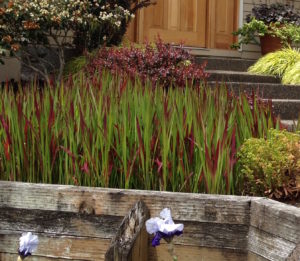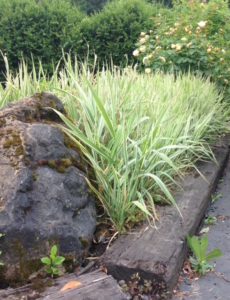Resistance is Futile-Plants that take over your landscape.
This blog is about attractive plants that take over your landscape. They are tempting and for sale at most garden centers.
Star Trek The Next Generation came out 20+ years ago but I was busy building my landscape design practice and raising a stepdaughter so I missed the whole thing.
Maybe I’m just going to seed as I recently watched all seven seasons in short order. I encountered the Borg and was impressed with their ability to take over a universe. The Borg remind me of certain plants that will happily assimilate your entire garden and need to be avoided.
Here’s a list of plants that are as nearly devastating as the Borg and good at propagating their own kind without any assistance. They have an aggressive spreading growth habit and yet they are still sold at most nurseries and garden centers in spite of their thuggish nature. Be warned.
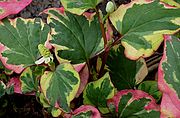
Houttuynia cordata ‘Chameleon’ Photo Source
Here is a beauty of a beast: Houttuynia
Houttuynia cordata ‘Chameleon’ – I’ve never known anyone who (once it was planted ever managed to get rid of it. It is famous for aggressive roots that will grow through other plants and overpower them. It can seed although it hasn’t in any of my clients gardens because I never use it. Look at how cute the variegated leaf is!
Japanese Bloodgrass Spreads
Imperata cylindrica ‘Red Baron’ or ‘Rubra’- Japanese blood grass is a spreader but it can be dug out and eventually be banished but don’t sacrifice your time to this plant. If you are going to plant it anyway….it is a beautiful (very beautiful) plant, trap it by planting between a sidewalk and a retaining wall as this designer pal of mine did.
Ribbon Grass is on the Fence
Ribbon Grass, Phalaris arundinacea, is a plant that can be very difficult to eradicate but if a designer suggests it for a contained area that doesn’t mean they are a newbie. It is planted in a parking lot that I frequent. It’s been trapped there over 9 years and has not escaped. I myself have never used it in a design but it is very very low maintenance. This article talks about using herbicides to re-claim natural areas on the Metolius River. Here is an article regarding success in killing the ribbon grass. Sorry to say it but the other method I know of is digging out the plant over and over.
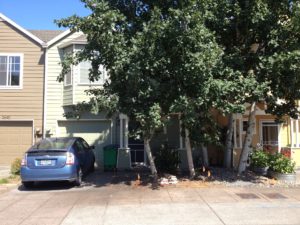
This stand of Aspens (Populus tremuloides) started out as one trunk!
Aspen Trees
Aspen trees, Populus tremuloides, are beautiful in a forest but not good for tiny city plots. One tree will become many and fill your soil space with invasive roots that lift walkways, invade foundations and water lines and leave companion plants with no water or nutrition. See this great article from designer pal Beth Goodnight regarding the evils of aspen and some alternative suggestions.
Keep Mint in a Pot
If mint gets away from you – you will never get rid of it. Some people plant it in a pot and keep it on a concrete patio. The roots can escape from the pot and once it spreads in your soil you will have it forever so I never set my pot of mint into a planting bed. I like having mint for soups but it is strictly a container plant.
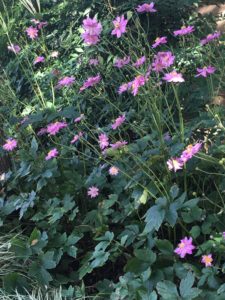
Japanese Anemone is beautiful but travels fast-best to know what you are doing if you have this plant.
Japanese Anemone and Bishops Weed in the Right Spot Only
Japanese anemone, Anemone sp., should be used with caution. This one is very very seductive and over the top beautiful. It travels by root which is the problem. I like to use it in very low maintenance planting plans/landscape designs and in parking strips where it is easily contained. It doesn’t seem to invade the lawn so I’ve used it in low maintenance plant borders too.
Bishops weed, Aegopodium podagraria, should be planted by people who know exactly what they are in for. It can be contained in the parking strip or a low maintenance planting where you have nothing but shrubs. Large shrubs with bishops weed as a ground cover can be a functional landscape choice. If I use it I have a rule: You are not allowed to ever give a start of it to a friend.
There are, of course, many plants besides my short list that should be avoided or used with caution. These plants are the stars of this blog because they are so attractive, tempting and readily available at your local garden center.
Let us put our plant knowledge to work for you and create a design with plants that are helpful to pollinators, attractive, lower maintenance and won’t take over your landscape. Contact us for a landscape re-design and start enjoying your yard instead of being stymied and frustrated by aggressive take over plants. Taking care of a yard you don’t even like is thankless.

